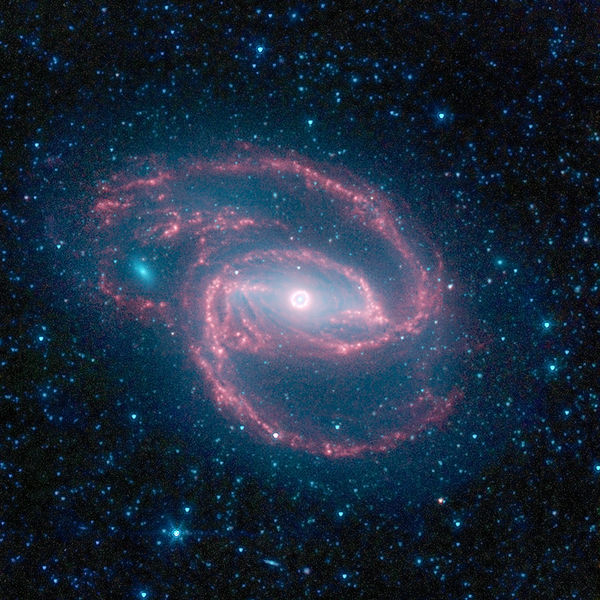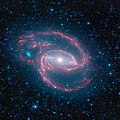Податотека:Coiled Galaxy.jpg

Големина на овој преглед: 600 × 600 пиксели. Други разделности: 240 × 240 пиксели | 480 × 480 пиксели | 768 × 768 пиксели | 1.024 × 1.024 пиксели | 2.056 × 2.056 пиксели.
Изворна податотека (2.056 × 2.056 пиксели, големина: 1,04 МБ, MIME-тип: image/jpeg)
Историја на податотеката
Стиснете на датум/време за да ја видите податотеката како изгледала тогаш.
| Датум/време | Минијатура | Димензии | Корисник | Коментар | |
|---|---|---|---|---|---|
| тековна | 01:20, 25 мај 2010 |  | 2.056 × 2.056 (1,04 МБ) | Tryphon | Better quality, from http://www.spitzer.caltech.edu/Media/releases/ssc2009-14/ssc2009-14a.shtml (http://ipac.jpl.nasa.gov/media_images/ssc2009-14a1.jpg). |
| 15:29, 11 август 2009 |  | 2.056 × 2.056 (457 КБ) | TonyBallioni | {{Information |Description={{en|1=Original caption released with photo: NASA's Spitzer Space Telescope has imaged a wild creature of the dark -- a coiled galaxy with an eye-like object at its center.The 'eye' at the center of the galaxy is actually a mons |
Употреба на податотеката
Податотекава се користи во следнава страница:
Глобална употреба на податотеката
Оваа податотека ја користат и следниве викија:
- Употреба на ar.wikipedia.org
- Употреба на ast.wikipedia.org
- Употреба на be-tarask.wikipedia.org
- Употреба на cs.wikipedia.org
- Употреба на cy.wikipedia.org
- Употреба на de.wikipedia.org
- Употреба на el.wikipedia.org
- Употреба на en.wikipedia.org
- NGC 1097
- List of spiral galaxies
- Talk:NGC 1097
- Wikipedia:Featured pictures/Space/Looking out
- Wikipedia:Featured pictures thumbs/36
- Wikipedia:Featured picture candidates/November-2013
- Wikipedia:Featured picture candidates/File:Coiled Galaxy.jpg
- User talk:The Herald/Archive 4
- Wikipedia:Picture of the day/July 2015
- Template:POTD/2015-07-29
- User talk:The Herald/Archive 31
- Wikipedia:Main Page history/2015 July 29
- Wikipedia:Reference desk/Archives/Miscellaneous/2015 July 29
- Употреба на es.wikipedia.org
- Употреба на fa.wikipedia.org
- Употреба на fr.wikipedia.org
- Употреба на id.wikipedia.org
- Употреба на it.wikipedia.org
- Употреба на ja.wikipedia.org
- Употреба на kk.wikipedia.org
- Употреба на ko.wikipedia.org
- Употреба на no.wikipedia.org
- Употреба на pl.wikipedia.org
- Употреба на pl.wikinews.org
- Употреба на pt.wikipedia.org
- Употреба на sk.wikipedia.org
Погледајте ја останатата глобална употреба на податотекава.

